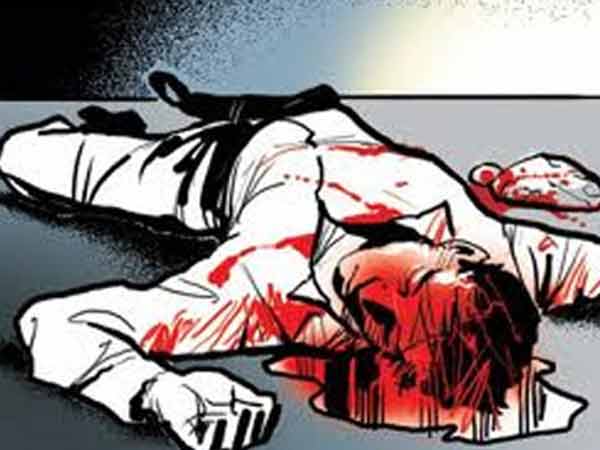இ.த.ச 300
சில காரணங்களை தவிர்த்து - மரணத்தை விளைவிக்க கூடிய குற்றம் கொலைக் குற்றமாகும். கொலைக் குற்றமாக கருதக்கூடிய கொள்ளத்தக்க காரணீகள் யாதெனில்.
1-மரணத்தை விளைவிக்க வேண்டும் என்ற கருத்துடன் ஒரு செயலைப் புரிந்து அதன் விளைவாக மரணம் ஏற்பட்டிருந்தால்; அல்லது,
2-உடலில் உண்டாக்கப்பட்ட காயத்தால் ஒருவர் மரணம் அடைகிறார். காயத்தை உண்டாக்கியவருக்கு, அவர் உண்டாக்கும் காயத்தால் அந்த நபருக்கு மரணம் உண்டாகும் என்று தெரியும். தெரிந்தும் அந்தக் காயத்தைக் கருத்துடன் உண்டாக்குதல்; அல்லது,
3-ஒருவருடைய உடலை காயப்படுத்த வேண்டும் என்ற கருத்துடன் ஒரு காரியம் செய்யப்படுகிறது. அதனால் ஒருவர் மரணம் அடைகிறார். அப்படி அவர் உண்டாக்கும் காயம், இயற்கையின் வழிமுறையின்படி மரணத்தை அடைய செய்வதற்கு போதுமானது என்று அறிந்திருந்தால்; அல்லது,
4 - ஒருவர் தாம் செய்யும் காரியம் அபாயகரமானது. அதனால் அடுத்தவருக்கு மரணத்தை சம்பவிக்கும் அல்லது மரணத்தை உண்டாக்க கூடிய உடல் காயம் ஏற்படும் என்று அறிந்திருந்தால் போதும் அறிந்தும் அத்தகைய காரியத்தை புரிதல்.
விதிவிளக்கு - மரணத்தை விளைவிக்கும் குற்றம் எப்போது கொலைக்குற்றமாகது எனில் ஒருவர் திடிரென தூண்டப்பட்ட உணர்ச்சிகளை அடக்க முடியாமல் நிதானத்தை இழந்துவிட்ட சூழ்நிலையில் , தன்னைக் கோபப்படுத்தியவனைத் தாக்கி மரணம் அடையச் செய்தாலும் அல்லது அந்த கோபத்தில் தவறுதலாக வேறு ஒருவருக்கு மரணத்தை உண்டாக்கினாலும் மரணத்தை விளைவிக்கும் குற்றம், கொலைக் குற்றமாகாது.
Except in the cases hereinafter excepted, culpable homicide is murder,
1-if the act by which the death is caused is done with the intention of causing death, or-
2ndly
If it is done with the intention of causing such bodily injury as the offender knows to be likely to cause the death of the person to whom the harm is caused, or-
3rdly
If it is done with the intention of causing bodily injury to any person and the bodily injury intended to be inflicted is sufficient in the ordinary course of nature to cause death, or-
4thly
If the person committing the act knows that it is so imminently dangerous that it must, in all probability, cause death or such bodily injury as is likely to cause death, and commits such act without any excuse for incurring the risk of causing death or such injury as aforesaid.
Illustrations
(a) A shoots Z with the intention of killing him. Z dies in consequence. A commits murder.
(b) A, knowing that Z is labouring under such a disease that a blow is likely to cause his death, strikes him with the intention of causing bodily injury. Z dies in consequence of the blow. A is guilty of murder, although the blow might not have been sufficient in the ordinary course of nature to cause the death of a person in a sound state of health. But if A, not knowing that Z is labouring under any disease, gives him such a blow as would not in the ordinary course of nature kill a person in a sound state of heath, here A, although he may intend to cause bodily injury, is not guilty of murder, if he d8id not intend to cause death, or such bodily injury as in the ordinary course of nature would cause death.
(c) A intentionally gives Z a sword-cut or club-wound sufficient to cause the death of a man in the ordinary course of nature. Z dies in consequence. Here, A is guilty of murder, although he may not have intended to cause Z's death.
(d) A without any excuse fires a loaded connon into a crowd of persons and kills one of them. A is guilty of murder, although he may not have had a premeditated design to kill any particular individual.
Exception I-When culpable homicide is not murder-Culpable homicide is not murder if the offender, whilst deprived of the power of self-control by grave and sudden provocation, causes the death of the person who gave the provocation or causes the death of any other person by mistake or accident.
The above exception is subject to the following provisos :--
http://www.indianlawcases.com/Act-Indian.Penal.Code,1860-1750
குறிப்பு - இந்த பகுதியில் உள்ளவற்றை பொது அறிவாக மட்டும் எடுத்துக் கொள்ள வேண்டும் ஏதாவது சட்ட நுனுக்கம் தவறாக இருப்பின் சுட்டிக் காட்டுங்கள் திருத்திக்கொள்கிறோம். இதையே இறுதி வடிவமாக எடுத்துக் கொள்ளக்கூடாது. மேலும் வழக்குக்குரியதல்ல.


No comments:
Post a Comment